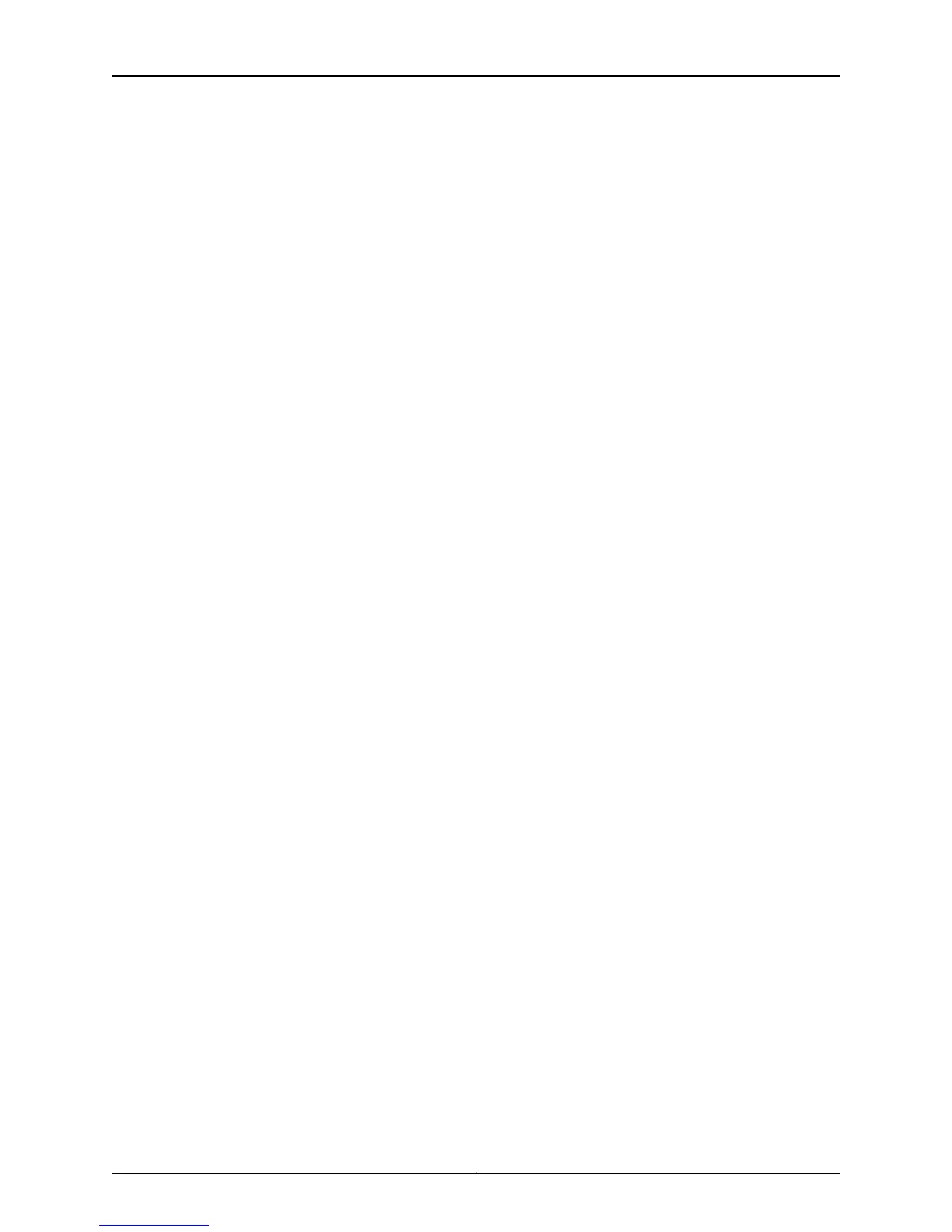The configuration specified in group re0 is only applied if the current Routing Engine is in
slot 0; likewise, the configuration specified in group re1 is only applied if the current Routing
Engine is in slot 1. Therefore, both Routing Engines can use the same configuration file,
each using only the configuration statements that apply to it. Each re0 or re1 group
contains at a minimum the configuration for the hostname and the management interface
(fxp0). If each Routing Engine uses a different management interface, the group also
should contain the configuration for the backup router and static routes.
To view the existing groups configuration, use the following command in configuration
mode:
[edit]
user@host# groups
user@host# show
[edit groups]
user@host# show
re0 {
system {
host-name foo-re0;
}
interfaces {
fxp0 {
unit 0 {
family inet {
address 10.0.0.1/24;
}
}
}
}
}
re1 {
system {
host-name foo-re1;
}
interfaces {
fxp0 {
unit 0 {
family inet {
address 10.0.0.2/24;
}
}
}
}
}
Use the already-existing groups statement, and use re0 and re1 as keyword group names.
Each Routing Engine applies the slot-specific group configuration information to its
configurations.
In the main configuration body, add the rest of the configuration that will be the same
on both Routing Engines. Do not include the configuration statements that you made in
the group configurations (such as configurations for fxp0). If you configure items in the
body of the statement that also exist in the groups statement, the configuration in the
body takes precedence—the configuration from the group statement will not be inherited.
[edit]
587Copyright © 2012, Juniper Networks, Inc.
Chapter 28: Host Redundancy Overview
